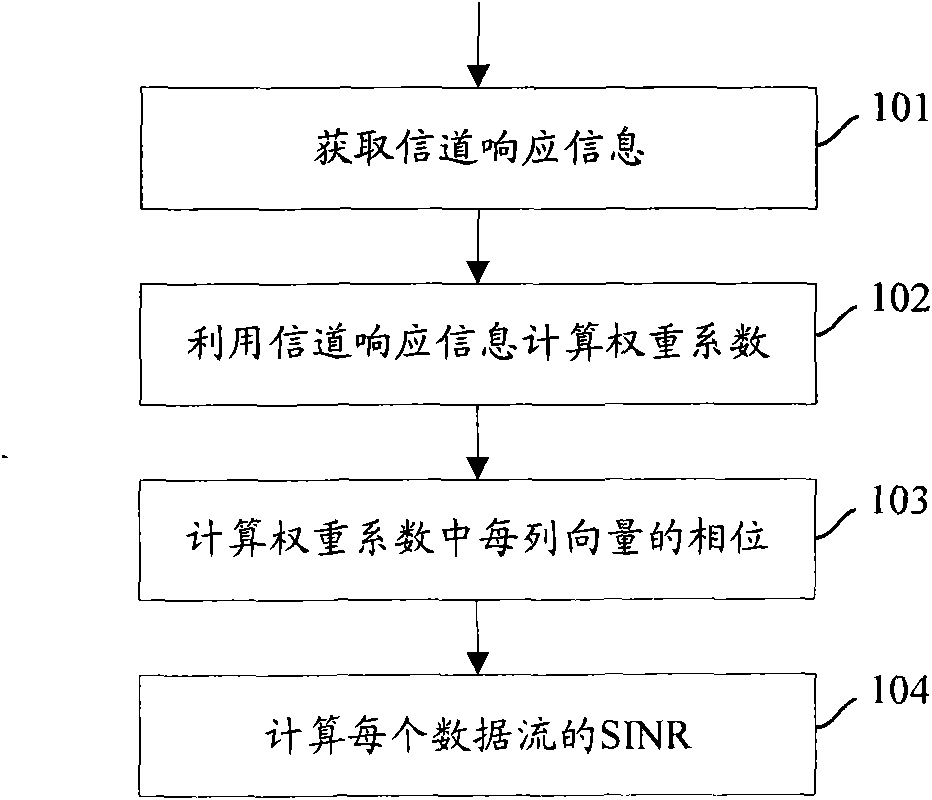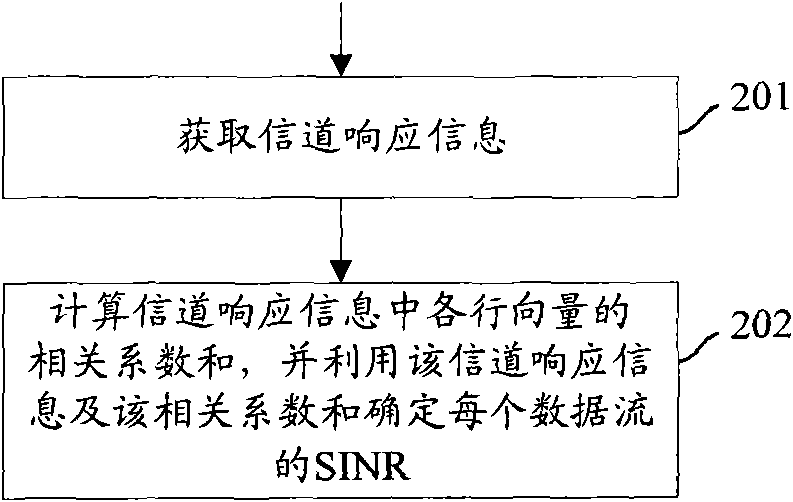Method and device for confirming signal-interference-noise radio
A technique for determining SINR and its determination method, which is applied in the field of SINR determination in multi-user wireless communication systems, and can solve the problems of increased system cost, long time, and increased complexity
- Summary
- Abstract
- Description
- Claims
- Application Information
AI Technical Summary
Problems solved by technology
Method used
Image
Examples
Embodiment 1
[0083] In this embodiment, before calculating the correlation coefficient sum of each row vector, first calculate the energy of each row vector in the channel response information, and use the calculated energy to normalize each row vector, and then use the normalization result of each row vector Computes the correlation coefficient of the normalized results of each two row vectors. In this embodiment, the correlation coefficient sum of each row vector is the correlation coefficient sum of the normalized result of each row vector.
[0084] Figure 4 A detailed flowchart of the SINR determination method in this embodiment is shown, see Figure 4 , in this embodiment, the SINR of each data stream is obtained according to the following steps:
[0085] In step 401, channel response information is obtained.
[0086] Similar to step 101 of the existing method, the channel response information in this step may also be a channel state information matrix or an equivalent channel state...
Embodiment 2
[0119]In this embodiment, the row vector normalization processing of the channel response information in Embodiment 1 is not performed, but the correlation coefficient sum is directly calculated using the row vector in the channel response information, and then each data stream is determined according to the method in step 405 SINR.
[0120] Figure 6 A detailed flowchart of the SINR determination method in this embodiment is shown, see Figure 6 , in this embodiment, the SINR of each data stream is obtained according to the following steps:
[0121] In step 601, channel response information is obtained.
[0122] The channel response information in this step may also be a channel state information matrix or an equivalent channel state information matrix.
[0123] In step 602, the correlation coefficient of each row vector is calculated, and the sum of the correlation coefficients is obtained.
[0124] In this step, the correlation coefficient of each two row vectors in the...
PUM
 Login to View More
Login to View More Abstract
Description
Claims
Application Information
 Login to View More
Login to View More - R&D
- Intellectual Property
- Life Sciences
- Materials
- Tech Scout
- Unparalleled Data Quality
- Higher Quality Content
- 60% Fewer Hallucinations
Browse by: Latest US Patents, China's latest patents, Technical Efficacy Thesaurus, Application Domain, Technology Topic, Popular Technical Reports.
© 2025 PatSnap. All rights reserved.Legal|Privacy policy|Modern Slavery Act Transparency Statement|Sitemap|About US| Contact US: help@patsnap.com



